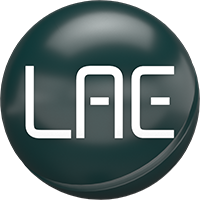We’re back in Calgary at the National Music Center.
Last time we met with Jason Tawkin, to discover the rich history of the Rolling Stones mobile studio and it’s one of a kind Helios console.
In this video, Jason explains the value of the RSM in today’s digital recording age, and why his team will ensure this piece of history is used to make great recordings well into the future.
►► Use my VIP link to get 7% off your first year at DistroKid
Jason describes the unique sound of the Helios console and highlights the hifi transparency that enabled engineers to use the console on a wide variety of recording sessions.
Olympics studios was their main inspiration, as a hub of innovative recording technology in the 1960s. Both studios required a universal preamp that could handle anything an artist might come up with.
Jason explains that although the tape machine can be swapped out for a digital ProTools rig, the analogue circuitry of the Helios console has been preserved in its original state by way of a ‘conservative restoration’. This maintains not only the original sound, but also electrical work, circuits designs, that can be preserved for future reference.
Then Jason shows us how to route a track thru the input section of the Helios, how to set pre amp level, polarity, and EQ. We learn how to adjust the fader, bypass insert effects, and how to route bus sends to the tape recorder.
One of the most ingenious devices aboard the RSM are the Split Boxes. These allow both the live sound technician and the studio recording engineer to have separate feeds from the on stage microphones.
►About the Rolling Stones Mobile Studio
Conceived by Rolling Stones tour manager Ian Stewart and built in 1968, the Rolling Stones Mobile Studio (RSM) was the first ever professional mobile recording studio. The mobility of the truck and flexibility of its recording equipment allowed the RSM to capture some of the most iconic rock ‘n’ roll records of all time. The RSM is even referenced in the Deep Purple song “Smoke on the Water,” which tells the story of how the mobile studio was almost destroyed by a casino fire when the band recorded in Montreux, Switzerland. Acquired by the National Music Centre (NMC) in 2001, the RSM has since been restored and is now available to be used by artists. It is now parked next to the King Eddy stage, a historic live music venue, where it can record directly from the stage or connect to any of NMC’s unique live rooms. Learn more about recording at Studio Bell, home of the National Music Centre.
►About Studio Bell
Studio Bell, home of the National Music Centre (NMC), is more than a museum. Tour five floors of exhibitions that tell the story of music in Canada, see historic musical treasures, and make sure to check out a concert at one of several live music spaces. Already a recipient of multiple architectural awards, Studio Bell is the stunning home for music in Canada. For more information about NMC’s onsite activities, please visit studiobell.ca. To check out the NMC experience online, including video-on-demand performances, made-in-Canada stories, and highly entertaining educational content, visit their website!




